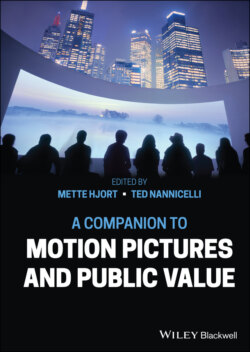Читать книгу A Companion to Motion Pictures and Public Value - Группа авторов - Страница 48
Film and the Appreciative Shift
ОглавлениеLike poverty of representation, the appreciative shift is a genuine concern, historical and contemporary, for the mediated appreciation of nature. Indeed, it would be naïve to think that we could have any interesting representation of nature that presented nature purely “as it is,” and whose appreciation lacked any human, interpretive element. Nonetheless, even in the genres of landscape painting and photography, the shift to this human element is rarely total. As noted earlier, Ansel Adams’ photograph of Half Dome puts compositional elements to the fore, but it nonetheless does present features of Half Dome, and these features are part of what we appreciate. In general, images can sustain interest in both their compositional, artistic elements and their depicted subjects: Jerrold Levinson’s analysis of erotic art offers a helpful analogy here. Levinson (2005) describes erotic art precisely in terms of attention shifting between the artistic composition of the image and its suggestive subject matter. Indeed, for Levinson this constant interplay is part of the distinctive appeal of erotic art, and surely much artistic nature photography and landscape painting involves a similar interplay between content and image.
As mentioned, appreciation can shift not only to compositional features of a representation, but also to the expressive qualities, which the artist, as it were, imparts to the work. The latter sort of shift, like the former, is rarely a total one, and moreover in some cases may not really represent a shift “away from the subject” of the representation at all.15 For while the expressive quality of a representation can divert appreciation away from the natural thing that is the work’s subject, it is perhaps more frequently the case that the expressive element of the work calls attention to an expressive quality of that natural subject. Tom Thomson’s The Jack Pine (1916), for example, certainly has an expressive, emotional quality: something of a cold and unsettling serenity. But though Thomson carefully emphasized this quality in creating the image, this is a quality possessed by the subject of the painting—the landscape of Northern Ontario. Here we have not an imposition of the painter’s feeling onto the landscape, but rather a lining up of the expressive aspect of the image with the qualities of the landscape itself.16
Even with respect to genres such as landscape painting and photography, then, the danger of the appreciative shift has been exaggerated. But this exaggeration is furthered by a narrow focus on these particular media. Once again, other art forms provide a different perspective.
Wildlife painting, for example, provides an instance where compositional elements and expressive aims have traditionally been treated as less significant than subject matter.17 However, it is again film that provides the most salient corrective here, for the narrative structure of a typical nature film, coupled with the immersive quality of the medium, puts its subject matter firmly into the foreground in a way that painting and photography cannot. In a still image, an animal or an environment may slip into the background of an appreciator’s awareness, as a mere formal element or signifier of artistic meaning, Snow Exposure being a case in point. But in a film documenting the growth, movement, and behavior of said animals, such a radical appreciative shift hardly seems possible.
It may be objected that, in the context of film, the appreciative shift is no less prevalent, but only takes a different form. Although a film may purport to document the life of an animal, in fact what is shown may be a narrative contrived by the filmmakers, and driven more by ideology or dramatic necessity than anything to do with the subject. However, although the history of nature film furnishes many examples of this approach (see Mitman 1999; Bousé 2000), it is hardly an inherent feature of the art form, much less an ideal for it. It is true that due to the many practical and ethical obstacles with filming animals, cinematic representations of them require a high degree of construction, and the use of techniques of dramatization, re-enactment and editing. So what we see in a nature documentary is almost never something that “actually happened” just as it is represented on screen. But that does not entail that what is appreciated when viewing such a film is not the look, behavior and life cycle of the animals represented.
So to sum up, I have argued that a consideration of film again helps us to see that, while mediated appreciation has its limitations and potential pitfalls, it would be an overreaction to reject the very idea. Artistic representations do offer us a way, never a pure one to be sure, of aesthetically appreciating nature in the absence of direct experience. This, however, is a rather defensive conclusion. Is mediated appreciation merely a passable substitute for direct experience of nature, as a photograph of a Degas canvas might be a passable substitute for the artwork? Or might mediated appreciation play a more significant role in the aesthetics of nature? To pursue these questions, I turn now to a closer look at the notion of appreciative aptness.
